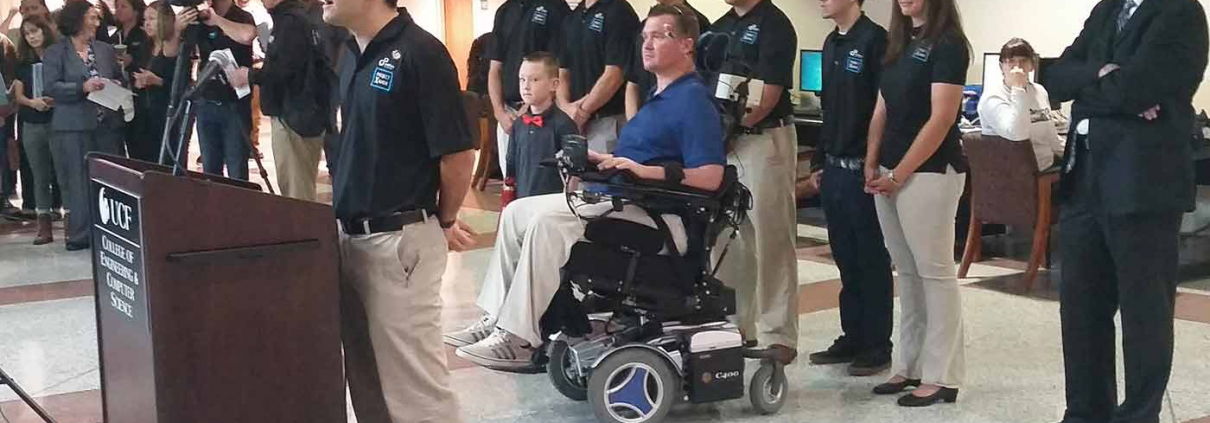Limbitless Solutions Creates Impressive Wheelchair Technology

Imagine using your facial muscles to propel yourself to wherever you wanted to go—imagine no more. Through the work of Limbitless Solutions, with the vision of creating solutions for people with disabilities, a new device that moves wheelchair users using facial movements exists. This groundbreaking innovation, made from a 3D printer, was a mere idea a year ago that has transformed into a lower-cost alternative to other forms of tech. Other hands-free wheelchair options can run up to $1,000—or more. The work from Limbitless Solutions can be produced for considerably less at around $300. Charlie Merritt, the U.S. Marine who is a quadriplegic and first demonstrated the technology, took only five minutes to master the equipment. Coupled with wheelchair accessible cars, the future is moving toward being more accessible for all.
How the Wheelchair Operates
Limbitless Solutions’ accessible equipment is made up of electrical components in a small box that attaches to the joystick controls on a wheelchair. Attached are electromyographic sensors that are placed on the user’s face. Strategically positioned, the sensors send signals to the box, depending on the muscles that are being used, and are translated into analog signals for movement. Identical to the joystick movements, this facial muscle technology allows wheelchair users to turn left and right and go backward and forward. The group of five mechanical engineers from the UCF-based non-profit led their efforts under the name Project Xavier. Similar to the professor from X-Men, who controls his wheelchair with his mind, the group found it fitting for their tech to be created under that namesake. What is particularly amazing about the operation is that it can be transferred from wheelchair to wheelchair, not forced to be used with one. Limbitless Solutions is hoping to get a final version that is safe and reliable out for mass production, and, like mobility vehicles, to give more independence to quadriplegics.
Limbitless Solutions’ Goals
The non-profit organized first assembled to volunteer their skills and time to bring technology to the kids who need it most. At first, their attention was directed toward children that typically outgrow their bionic aids quickly; the costs stack up quickly too. One of their more recent efforts, “12 Arms for Christmas”, was geared to delivering prosthetic limbs to children ages 5 to 11 before Christmas 2015. The Central Florida-based team also received national coverage earlier in 2015 when Robert Downey Jr. personally presented a robotic arm to a young boy as a gift. Limbitless Solutions’ files, manuals and designs are open source so, while they’re working on expanding, you can create your own devices for yourself or someone you know. One day, the use of facial technology for wheelchairs and mobility vehicles will soon be available easily for all.
The National Mobility Equipment Dealers Association (NMEDA) is an advocate for mobility and accessibility for drivers with disabilities. If you need help with converting or buying a handicap accessible car, truck or van, please consider one of our Quality Assurance Program mobility equipment dealers.
